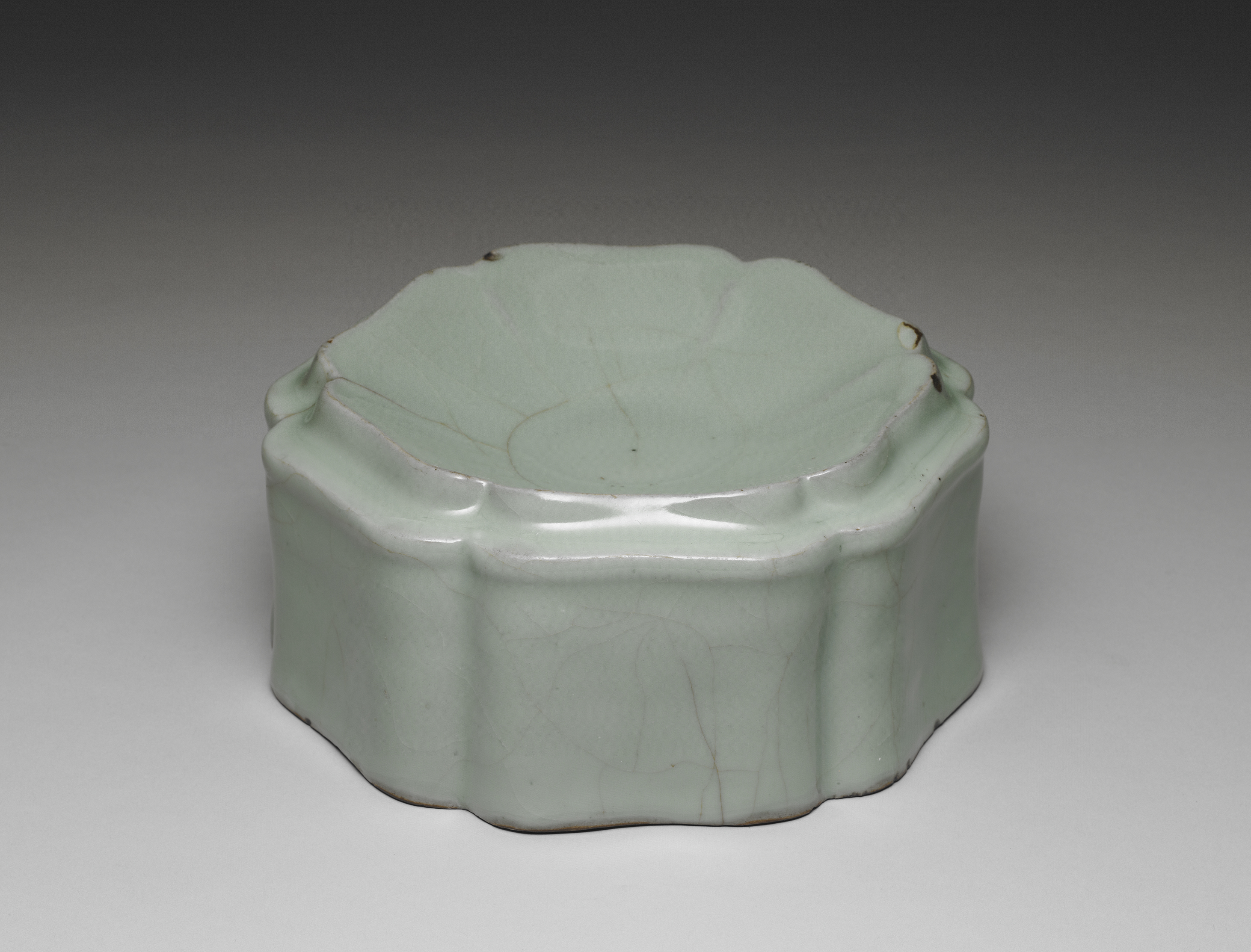Hibiscus-shaped basin with light bluish-green glaze, Guan ware, Southern Song dynasty, 12th-13th century
- Image Number: K1B014018N000000000PAB
- Dynasty: Southern Song dynasty
- Category: Ceramics
- Function: Miscellaneous apparatus
- Material: Minerals/Ceramics/
- Description:
A six petal sunflower shaped box with a concave top and a hollow inner wall. Mat burning, green glaze is applied inside and outside, and the color is pink and green. The enamel is thick, and the edge glaze is thin with pink edge. The glaze is partially open, with multi-layer glaze mark visible at the bottom edge, ochre juice is applied at the touchdown edge, and the black gray tire is exposed at the old bruise at the mouth. Through the volume “Antique Painting” collected by the British Museum, you can have a glimpse of this kind of works that have been handed down and collected in the Qing Palace. Archaeological examples show that square, round and sunflower shaped caves were unearthed in Qingliang Temple, Baofeng County, Henan Province, while round ones were unearthed in Tiger Cave, Hangzhou, Zhejiang Province. Since the ancestor type can be traced back to lacquerware products, and Yue kilns are also fired, it can be regarded as one of the popular types since the Five Dynasties. If we consider the unearthed example of the Korean Emperor Renzong’s Mausoleum (1146), we can infer that this shape also spread to

![图片[2]-Hibiscus-shaped basin with light bluish-green glaze, Guan ware, Southern Song dynasty, 12th-13th century-China Archive](https://chinaarchive.net/Southern Song dynasty/Ceramics/K1B014018N000000000PAB-32717.jpg)
Pictures & Images [HD] download
© Copyright
The copyright of the article belongs to the author, please keep the original link for reprinting.
THE END





